These 4 iconic classics just aren’t attracting young buyers
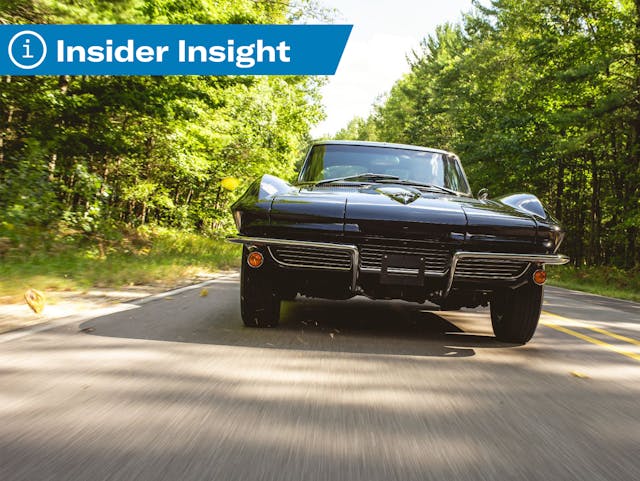
Want a better understanding of what’s driving collector-car values? Sign up for the Hagerty Insider newsletter.
If you’re a regular reader, you’ve probably noted that we frequently reference demographic data—in particular, age. That’s due to both supply and demand. We have a surfeit of information on enthusiasts’ ages courtesy of Hagerty’s insurance call centers (“how old are you” is one of the standard questions an agent will ask in order to give you a quote on insurance). And we know, from comments on Hagerty media articles and chatter at practically every car event, that many enthusiasts worry whether the next generations will keep our hobby going.
Generally, the story is an encouraging one. Our data show younger enthusiasts are increasingly interested in collector vehicles and in particular tend to appreciate the very same vehicles their parents and grandparents loved.
Of course, this interest is fortunate for the hobby—if every enthusiast sought out solely the new cars of their youth, tens of thousands of Ford Model Ts and Model As (along with countless other models) wouldn’t still be on the road.
This phenomenon doesn’t extend to every classic car, however. Based on our policy quote data, some vehicles face flagging interest among younger collectors—and we’re not just talking about fringe models, either.
Before diving in, we should remind you that age is just one of several factors that enable us to accurately track collector marque and model trajectories. Breaking down enthusiasts by generation admittedly lumps together a broad swath of automotive interests—a Gen-Xer born in California in 1965 may well have different collector influences and priorities than one born in Idaho in 1979, for example. That said, parsing interest in vehicles by collector age group has proven to be an effective indicator of the potential future health of that vehicle’s valuation.
1961–74 Jaguar E-Type (series I, II and III)
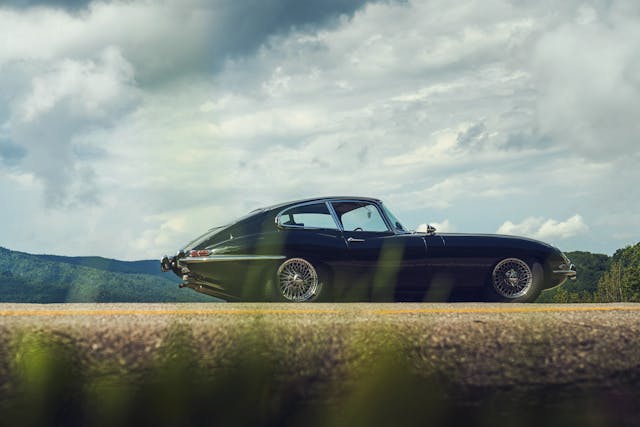
For all three series of E-Types, a full 80 percent of quotes are from enthusiasts born before 1965.
Cost likely has something to do with that—older enthusiasts still tend to dominate interest in more expensive vehicles, and the series I (1961–7) E-Type, the most popular model, is reliably a six-figure car, per both the Hagerty Price Guide and the values callers assign to their cars when they call us ($148K, on average). Yet the series II (1968–71) and the V-12-powered series III (1971–4) tend to be more attainable and still get relatively little interest from younger collectors.
1948–65 Porsche 356
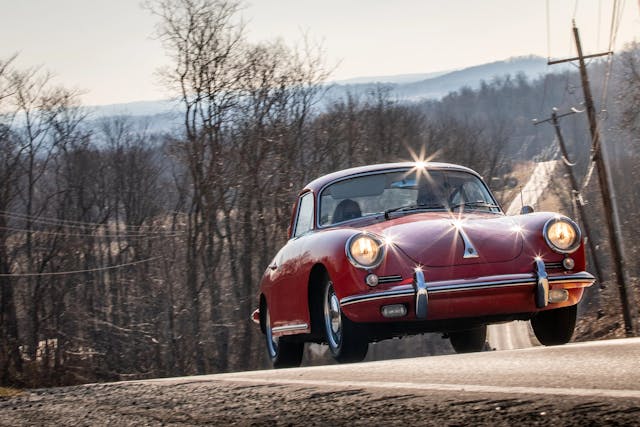
Porsche as a whole is one of the healthiest brands in terms of its appeal to enthusiasts of all ages, thanks largely to the longevity and timeless appeal of the 911. Yet that doesn’t seem to extend to the car that started it all, the 356.
Nearly 70 percent of the people calling us about insurance on one are born in 1965 or earlier. As with the E-Type, cost might be a factor. The earliest 356s (those built between 1949 and 1955, or “pre-A” in Porsche-speak) can hit seven figures, and even the later models (1963–5 356C) tend to be worth more than $100K. Yet no one would call the 964-era 911 Turbo an affordable car these days, and Gen-X and younger generations reliably make up close to fifty percent of interest in them.
1946–55 MG T-series
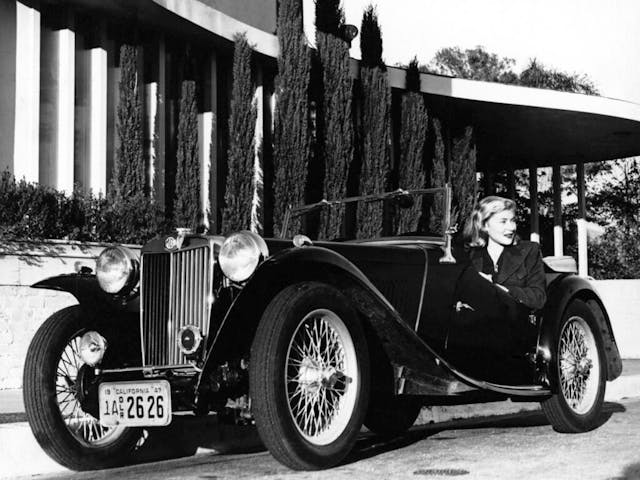
The MG aids in demonstrating that interest (or lack thereof) in a car is not simply a function of price. The MG series helped popularize the sports car in the United States after World War II and has always been an affordable gateway to the joys of open-air backroads driving. The 1950–3 TD, the most popular of the T-series MGs, can be had in good condition for around $20K. And yet 88 percent of quotes for these MGs are from enthusiasts born before 1965.
There are a number of factors here, including the fact that MG hasn’t sold a car in the United States since 1980. Yet the most salient reason for the MG’s lack of popularity among younger enthusiasts is probably the Mazda Miata, which is even less expensive (for now), considerably newer, and has the 1990s vibes that Millennials in particular seem to dig.
1963–7 Chevrolet Corvette

You might expect Corvettes to dominate this list but, for the most part, you’d be wrong. Late third-generation (or C3, 1974–1982) and fourth-gen cars (C4, 1984–1996) tend to be quite popular among younger collectors.
Yet for the 1963–7 C2, interest is indeed graying: Some 74 percent of people calling us about them were alive when the car came out. These cars aren’t MG-cheap, but, leaving aside early split-window cars and ultra-rare variants, neither are they E-Type expensive. People calling us for a quote on a C2 state an average value of $83K, about sixty grand less than for early E-Types.
The outlook isn’t the same for all American cars of this era. The 1961–9 Lincoln Continental (29 percent of quotes come from those born prior to 1965), 1960s Chevrolet Impalas (36 percent), the 1965–8 Ford Mustang (41 percent), and 1949–67 Volkswagen Beetle (36 percent) all have a majority of quotes from Gen-X and younger enthusiasts.
What’s to come?
What are the potential implications for those vehicles that don’t have much youth appeal? In the short term, we don’t see much risk. People from the baby boomer or earlier generations still control nearly 65 percent of the wealth in the United States and are extremely active in the collector car market.
If these trends continue over the long term, however, affected vehicles may see diminishing demand and values that don’t keep up with inflation or decline.
That won’t shake any of those cars from the firmaments of classic-car legend, and it won’t make them any less fun on your favorite road. Just the same, it never hurts to head out to local events, let the kiddos sit in the car, and take them for a spin.
***
Check out the Hagerty Media homepage so you don’t miss a single story, or better yet, bookmark it. To get our best stories delivered right to your inbox, subscribe to our newsletters.
Via Hagerty Insider
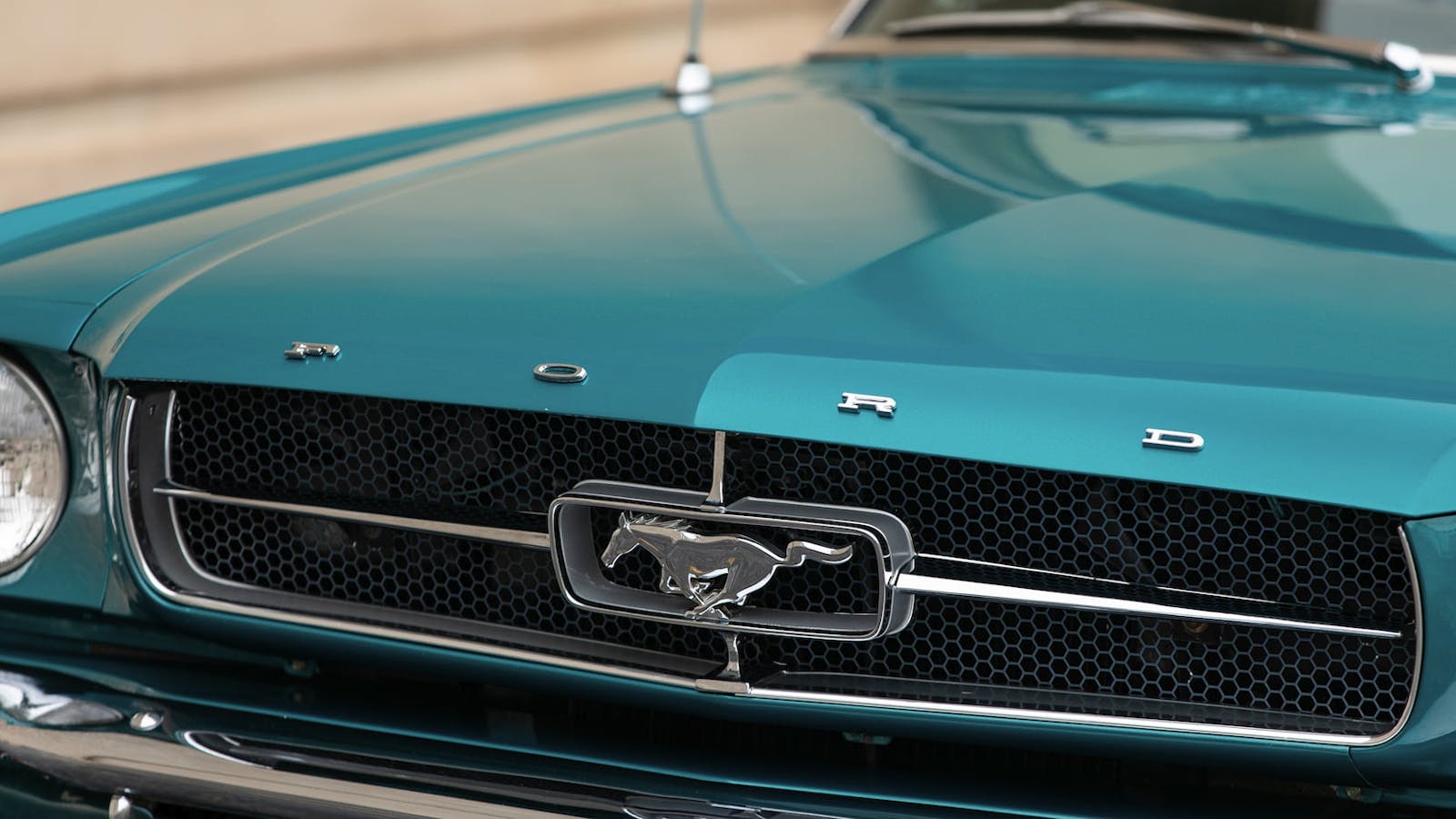

I still think the main issue is not that younger people are not interested but the overall price plus cost of restoration parts for these vehicles. I am 42 years old and believe me I’d love to own a E type or a 356 but I can’t come anywhere close to affording to buy one! I have classic vehicles but I am simply priced out of the market. I don’t want to cash in my 401k to buy one either, so I don’t even entertain the thought of ever owning one. Anyone who owns any of these vehicles aside from the MG knows what they are worth and the price is a small fortune. As far as an MGT goes I like them but there are far more open top sportscars that have better brakes, suspension, and horsepower, and If I’m totally honest better looking.
I agree – but I don’t think it’s limited to just the price of the autos! Young people nowadays are faced with education costs, housing costs, medical costs, insurance and food that are terrifying to me. I’m not even sure how they can afford to just live comfortable lives, let alone spring big bucks for luxuries like classic cars. If you are trying to buy a home and raise a family, paying 6 figures for a toy is near impossible to even contemplate.
Adam nails it.
All of the cars on the list are too pricey for most people not at the just empty-nest or later stage of life.
The MG is an old style sports car… as in archaic compared even to the 70s MG products. Sporty in 55, not so much post musclecar era, let alone post-Miata.
If someone equates a MG-T series with a Miata, well then, they really don’t get it. The Miata is a fine car and brings the driver the joy of open air motoring, but they are not at all comparable with a TC, TD, of TF. It all about what you like, and what you like to feel when you drive. One is historic, the other not so much. It all in what you want.
good comment, thanks
TD with 55 hp is a bit of a hard sell. I have my TD in the form of a Mini-Cooper
I agree wholeheartedly. The TD is barely drivable on US roads. With a top speed of 75 (when new) you can’t run with traffic on most US roads today. It’s good for a jaunt in a small town but is that what a Gen Xer is looking for. The rest are simply too expensive for 90% of that market.
Totally agree on this, plus Adam nails it. My father-in-law 83 loved the MG’s. After a few years of working on his new/old projects. I went out on a limb and bought him a last year produced, one owner Pontiac solstice 5800 bucks! He loves it drives it on nice days top down and close to 30mpg. I get to work on my projects not old English car wire harnesses. 🙂
I’ve always liked the TD & was going to buy one back in the 70s, but, I got in it, or tried to, & found that my 220#, athletic, muscled, power lifter body, could hardly get behind the wheel & steering was out of the question. Stayed with the “Bs” in that type of car.
I agree the T series MGs are truly historic. Perhaps too historic for today’s affluent youth. Being a sailor, you see it on the water today as well. The youth are buying 300hp center consoles. Recreational sailing is dying as a result. Racing at 8 knots isn’t all that appealing to most of them. And cruising all day at 6 knots bores the hell out of most teenagers, even your own.
There have been times in my sailing career where the term “I’ve never been so scared” while traveling at 8 knots…..
I’m a very active 75-year-old boomer who grew up sailing an 18′ catamaran, designed for the great lakes, and therefore I never really got excited sailing at 8 knots. I understand the GenXers lack of interest, after waterskiing behind it in gail force winds when I was 13.
Back in the day 1976, I bought my first car a 66 mustang from a neighbor for $200, my second a 67 mustang fastback for $700, Mark Donahue Javalin $2400!!! All were affordable and fun to drive. So here I am finally bought my 2016 Shelby GT350 40 year later! Wish I had money back then!!
Correct. My neighbors kids, young adults drive BMW and Audi. The dad tries to give them his old classic BMW and they don’t want it. They want expensive luxury, status. And besides that, they can’t work on anything today.
This. I’ve said for the past 20 years “what’s going to happen to the Model T’s when all those old timers that know how to operate/drive one pass. Let alone those that can rebuild an engine in one. They will all sit with no one left to drive them. Hell, it’s getting hard to find someone that knows how to operate a choke anymore let alone advance the timing as your accelerate.
Agree 100% Cost and usability factors in more than anything. Those of us young’uns who can afford a hobby car can usually only afford one, and not a terribly exotic one at that. Still kick myself for selling my C3 Corvette. I could get pretty much any mechanical part I needed at Napa for a decent price.
It is not just price as these same younger buyers are buying C8 corvettes, and other exotic cars that cost as much or more.
They are attracted to the more modern amenities, better handling and brakes.
Also they like to customize like wraps and tuner items for more and more power.
These old cars are fun and I love them. But they don’t handle, they don’t stop, they don’t have things we take for granted like in some cases roll up windows.
The youth with money today are more at home in a McLaren vs an MG.
Like I posted many even with out heavy money are going to cars like the C5-6-7 corvettes. The C5 e specially as it is a prime car for tuning today with the LS engine and lack of many computerized items.
This is very true, and a good point. Social media is dominated by the exotics, and young people equate that with success, so they know buying a vintage racer won’t get them the same amount of “likes”. I’m not an “old guy” yet (36), but this is my observation.
I personally would have loved a classic Datsun or MG, but when it came time for a daily driver, I had to go with a newer 370z for reliability amd handling. It certainly stands out among the mundane Toyotas the new crop of kids entering the workforce are driving.
I have a 58 MGA COUPE & 60 GA drop top & several MGBs, a76 Corvette. But the BMW M4 hard top convertible is hard to beat at any price, I got mine used at low spot in the market. This pushes ALL the buttons, plus a back seat for grandkids and very easy to travel with. Price is the stopping place for most younger folks, that’s why I’ve given my 3 grandchildren an MGB, gives them something cool to work on and is a lesson in machanics.
The youth are all over the Vett but you need to move to the C5-6-7 models as they are attracted to the performance aspect not nostalgia.
The C5 prices have risen much of late due to the Tuners. The 97-04 C5 is a tuners paradise. They can buy about anything for a LS and make these cars that already are fast even faster.
I have been sitting waiting on the C5 and I finally made my move as the prices have gone up over the last 5 years and will continue. The Z06 C5 will be the dominate one to have followed by the convertible,
Kids today want to not just go but go faster, turn harder and stop faster and that brings us to the cars of the 90’s.
The C5 is the last analog Corvette and the limits are endless of what you can do from stock to heavy mods.
One more factor to consider why they don’t embrace these cars. They never grew up with these cars. The guys nesting 80 years old wanted a 63 Vette back in the day. He finally bought it in the 80’s.
The youth were not born in the 60’s and while they may appreciate these cars they have no love for them. They have no nostalgia for a car that was before their time.
I am the same on a 55 Chevy. I like them but I will never own one as it was a car before my time.
This is a good insight, regarding the automobiles people grew up with, and their popularity with the “age
cohort” …..but disposable income is a key driver for many who are “weekend warriors” and car club members …..
Jan Leno is an excellent example of an enthusiast that has developed a very broad interest in all things automotive ….. there are many other serious collectors out there, and some have private collections that are accessible to the public….
Overall, a very interesting article about collector demographics.
Exactly. Sure, I like Model T Fords and Model A Fords, but I did not grow up with them. My father did and he spoke of them fondly. I did not, so I don’t really have an interest in owning one. There’s just not a connection. I can see why young people don’t want cars that are much older than they are, and that they have no connection to.
My first car was a 1979 Chevy Monza, and if I could find one of those in pristine condition, that would be what I would jump on. Not a great car by any means, but it was special to me.
Very sane comment. Thanks!
Go for it that was in your day I wish you luck .
I was born in 71, but I love the tri-5’s. I have owned 2 and currently doing a ground up rebuild on a 57. Just depends on your palette for style.
For anyone born in the ’90s and later (1990 for me) anything over $100k is just really really hard to justify given other expenses like child care, future college for kids, or paying off your own college/grad school. Anyone born in the 80s or 90s likely still has kids and putting your kids in something pre seat belts is a hard sell to your SO. If you are the only breadwinner or majority bread winner driving something pre airbags can feel irresponsible.
Then there is the way anything pre 1960s that I have driven is worse to drive than a 2000s diesel pickup, I’ll admit my experience is limited with pre-60s cars but has included “sports cars” of the period and my own 1959 Ford. So given a 1950s Vette has terrible handling, brakes, power, ergonomics, safety and pretty much anything else you can think of besides looks it’s just not an attractive idea proposal.
Likely young collectors will be looking at these cars once it’s affordable to restomod them to the point where they have acceptable by modern standards braking and handling. Planned to crown vic swap my 59 ford, but have decided a DB9 is more usable. Until then modern classics from the 80s, 90s and 2000s are going to be far more attractive to younger buyers.
Thanks. How about a way to educate them on what they are missing vs digging these cars an early grave? Just a thought.
Probably because “You can’t teach a young dog old tricks”. 😂
“…some vehicles face flagging interest among younger collectors…”
Perhaps the reason is the prices for these classics have become unreachable for most young buyers.
A Hot Rod in every garage. What a vote getter that would be!
As an example look at Joe Biden he has a ’67 Corvette and he is 80
Care to elaborate?
Best response ever. Made my day. Worked my butt off all my life to buy and restore an old CJ 7. She has a C5 motor with no emissions and Dana 44 rear end. No top, no doors, weighs like 2300 pounds.
Daddy bought it for him ……he did not buy it, just saying a fact.
Touche
Gifts from fathers to sons is a traditional family value, no?
Back in my 20s, I paid very little a Porsche 1956 356A, in need of much work but with a decent body. Weeks later, I discovered that it was a very rare Carera of which only 600 were built, between 1956 and the early 1960s, so I packed it away in my brother’s barn for 42 years. Fifteen years ago, I offered it for free to my son (now 45) with the stipulation that he had to get it back on the road, with my help of course. The car meant nothing to him, and he turned it down. So, I sat on it until 2018 when I sold it. He’s a GenXer, and like so many, they have less interest in working on something, whether it’s the house, a car, or anything else that calls for hand on labor. I can’t fault them, its just the way they are. Older cars may just not be their interest.
Year and he’s still living in the 60’s mentally
Give it a rest. We’re talking cars here, not making personal or political statements.
God, I wish we were.
And, I think he also owns (owned) a Cadillac CTS-V.
I don’t want to look at Joe Biden, but that Vette is going to be worth a fortune soon.
Hey, I hope so! I still have my ’67 I bought new and find it a joy just to look at her. Over the years I have fixed anything and everything that has stopped working to make the ride the way I remember. I’m 80 now and look forward to many more years of fun and renewing my memories each time I take it for a spin!
The Corvette, 356 and E-type are three cars which loom larger than life when you see one on the street and are daily driver capable. Ownership age is mostly a matter of wealth, like most commenters say. The MG though is not all that practical and I can see that one being more of a future depreciation with less potential buyers in the future.
Sadly with cars like the ’61 and up Lincoln Continental and Impalas it’s a matter of younger buyers who want to butcher them into kustom low riders which drives ownership.
Hi Iso Grifo. Please explain the name! My late father was fascinated with them, but I remain unsure whether it was the car itself or the fun name. Given he rebuilt 2 Moretti’s (extending the front end on one to drop in a 260) might have really been the car. I have an Iso Grifo Matchbox I found in a basket at an antique store, now feeling the urge to dig it out!
Regarding the age subject matter, I’m a 64 year old woman, and spent my career working hard, being practical and saving as much as possible. I was programmed to keep tight reins on the pursestrings. Now that I’m retired, I’ve gathered a 2001 Z3, a 65 Sunbeam Tiger and recently a 2000 M-Roadster. Compounding investments made it possible!
Although not mentioned, I’m curious what younger buyers think of the first generation two seat Thunderbird. A lot survived and the values have a huge spread from Minter restored trailer queens to barn find beaters. I’ve been looking for a ‘55 to build a mild restomod (sports car). I’m 68 years old but I’m just not into the fender skirt, wide whitewall and fuzzy dice look on the early birds. And the strength of high end custom restomods at Barrett-Jackson Scottsdale, particularly Corvettes, says a lot about future trends in this hobby.
Two factors as identified- Money – E types even in driver condition are deep pocket cars. Your toy car should cost less than your daily driver. (not that you won’t spend more on it over time) Second what did you lust for when you were 15? Figure plus or minus 5 years. TD’s have aged out with MGA’s and 356’s close behind.
I don’t think 356’s have aged out at all judging by the 2-3 year wait to get a replica built. An original is just too expensive, unless you are in the 1%.
Your collector car is not depreciating, your daily very likely is. Why are you putting most of your money into a depreciating asset? Yet another example of why you should question conventional wisdom. When you follow the popular path you never exceed average. Be brave and exceed average. I have saved money my whole life by driving low value daily cars while investing in appreciating weekend cars.
I’m always telling interested potential car enthusiasts that classic cars are often a FREE hobby. For the most, part that has been my experience.
And what mental gymnastics are required to arrive at that conclusion? Buying, maintaining, and enjoying a classic is free? Please share your theory…
I’m guessing that he means that if you choose wisely, and keep up with maintenance, you can enjoy owning a classic car and then at least recoup your money when you sell.
Of course, this is not investment advice, and past performance is no guarantee of future gains and all that.
Young people? Most car shows I go to I’m 68 and compared to the others there I’m a kid. The young car crazy American populace hardly exists anymore. At my garage that I have owned for 43 years young people come in for air. 90% have absolutely no idea how to put in in a tire. Everyday at a crosswalk I almost hit some kid just crossing without looking while his eyes are glued to his cellphone. When was the last time you saw a teenager polishing the family car? I polished my dad’s 1964 Malibu so much you couldn’t sit on without sliding off. With my generation we will collector car industry fade into the sunset.
BINGO
Maybe it is where you live? Here in Florida I attend many shows and are surprised with how many young people are there. I remember when I was young and attending car shows I truly felt unwelcome by most of the older people, like I was invading their safe zone. Consequently there were very few of us young people in car clubs or attending car shows. Another thought, keep politics out of the hobby if you want more people in the hobby. Nothing is more polarizing today, and we all need a way to escape it. Hopefully you are already doing that.
Actually, they all share a number of qualities that make them unattractive to younger enthusiasts. They are expensive cars- to buy, to run, to repair, to restore. The number of people places catering to them is dwindling, as the owner’s pool ages. You have to garage them. They don’t make good drivers. Where do you drive an MGTD in modern traffic? A 356? The Corvette is the closest to ‘practical’ of the four, but the ‘classics (C1, C2, C3) in spite of price drops are still not affordable. They are still 2 seat sports cars which are hard to justify to many younger buyers who have kids and stuff to lug around. As with most pre 80’s cars, unless you grew up with one, why would you want one? In the day, their. appeal was maximum performance. Their day has passed
I can’t say I totally agree regarding C2 corvettes. Granted, price is a major factor, but when I take mine out, some of my biggest fans are kids under 25.
I drive my 356 about 8,000 miles a year. Believe me, it has no problem keeping up with traffic. Cruising at 80 is no problem and it out handles and out brakes a lot of cars on the road. I do garage it and I sometimes “worry” about it but it is a car and it can be fixed. I built it and I can fix it.
No kid (younger than 30) nowadays will dare drive anything without bluetooth connectivity, a rear camera and multitude of cup holders. I talk from personal experience; as I have several nice classic cars, none of which draw my kids’ attention, even though they grew up around classic cars and attended many car shows with me. (15-25 year olds)
The conversion reminds of a line in a song.” Kids what’s the matter with kids today; why can’t they be like we were perfect in every way”. Every generation has(most have) grown up with money problems. Naturally it impacts their hobbies. As far as what they do buy, you have to remember there looking for something that signifies their generation. After the kids are grown, life slows down. That’s when a person starts looking at classic cars. It’s kind of like good bourbon, one has to develop a taste for it.
Yeah, for example, the rack stereos and tower speakers of the 1970s are popular today, but when a kid can listen all the ”music” he/she/it likes with a cellphone and ear buds, why spend their money on something that takes up so much space? Besides, their parents aren’t always yelling ”Turn that thing down!”.
Two ways Hagerty can help to keep the vintage Car Market virile–One–stop advertising EVs! That’s a deadend market–and people who are thinking understand . By continuing to advertise and promote and write about EVs in such glowing terms, Hagerty is hurting the vintage market. Two–Stop putting so much emphasis upon auctions. Promoting auctions as Hagerty has been doing only helps to escalate the prices–pushing younger people out of the vintage market! I know, I know–Hagerty is only telling what’s happening in Autotopia. I understand. But–don’t deify “dreamlandia”! jay
EV conversions may be the hot segment of the antique car market for a new generation
EVs and ICE cars can co-exist. I have bookends; a 71 MGB and a 2019 Nissan LEAF. Both are a blast to drive. Gasoline isn’t going away for a long time, but we need to consider the planet to keep making maple syrup south of the Canadian border and prevent increasingly destructive hurricanes from erasing the Gulf states. My grandson loves both cars.
So do I.
I belong to the Keystone British Car Club and we have made a coloring book to give to kids at our car shows and we take show visitors for rides in our cars to get younger demographics involved in the field.